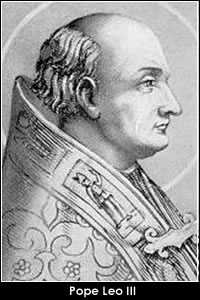Reciting the Creed
I lecture to seminarians about Theology, I am teaching the ‘Trinity’ paper at present. The standard systematic approach to any theological question is: ‘What does Scripture and Tradition have to say about it?’ Scripture is all found in the one book, but the Tradition is harder to define. The most important texts after the scriptures are the Creeds. They are the crystallised wisdom of Councils of the past and, as such, are touchstones of our faith and reflect key moments in the development of our understanding of it.
At most Sunday masses we recite the Nicene Creed, though there is the option to use the shorter and less complex Apostles’ Creed. The first Ecumenical Council gathered in Nicaea in 325 AD to combat the heresy of Arius and put together the very precise ideas of the basis of that creed (in Greek) for the assembled bishops to sign. The second Ecumenical Council in Constantinople in 381 AD tweaked it and added most of the section on the Holy Spirit. It seems to have been used in local liturgies between 325 and 381 in variant forms and had its rougher edges knocked off in the process.
Over time the Niceno-Constantipolitan Creed became the symbol of orthodox belief, a potent summary of truths of the faith. It was not written for the liturgy but it started to be recited there, particularly in baptism. As a symbol of orthodoxy it was also a symbol of unity, at least it was while everyone agreed on the words!
In the centuries after the Council, the Roman Empire split East-West with Greek being spoken in the East and Latin in the West. Constantinople was the centre of the Eastern empire, which carried on being a major political force while the Western Roman empire ‘declined and fell’ under barbarian invasions. In the West the Creed was translated into Latin. Perhaps because of its use in baptisms, the ‘we believe’ of the Greek was translated as credo - ‘I believe’.
In 587 AD a local council of Spanish bishops in Toledo added one word to the Latin version of the Creed. The word was ‘filioque’ making the Holy Spirit proceed from the Father ‘and the Son’. That addition of one word was to cause a huge amount of discord and grief. The addition was never accepted in the Greek-speaking parts of the Church who felt that a local council had no right to change what an ecumenical council had composed; how could a group of Spanish bishops dictate to the whole Church?
The Spanish practice spread to the Germanic tribe of the Franks in what was to become France. In the early 9th Century Charlemagne put together a coalition of tribes and set himself up as Emperor in the style of the Roman Empire. Constantinople was a competitor and Charlemagne accused the Eastern Emperor of heresy for omitting the ‘and the Son’ from the Creed.
Pope Leo III (795-816) intervened and forbade any additions or alterations to the Creed and Rome used the Nicene Creed without the ‘and the Son’ phrase. However in the territories under Charlemagne’s control it became the standard.
In the 11th century the Papal holding out against the Filioque finally crumbled and Benedict VIII (1012-1024) officially added it to the Creed. About this time the reciting of the Creed became a regular part of the Sunday mass.
Despite two Councils attempting to unify the practise of the Church, the East has hung on to the Creed as it came from Constantinople and the West has continued, in the Liturgy, to add the words ‘and the Son’.
Part of the power of a creed is its official status. It is given to us and we receive and recite it, just as it is. This is beautifully displayed in the Rite of the Christian Initiation of Adults where in one ceremony the catechumens are presented with the text of the Creed and in another, later ceremony, they recite it back to the congregation that gave it to them.
Some parish liturgy committees have introduced local statements of faith in the place of the Nicene Creed. As I have tried to show above, history teaches that this is the path of disunity and division. When we recite the Creed, as we have received it, we join with the Church Universal and with our ancestors in the faith we recite the old, hallowed words. This is not the place to innovate. When it comes to the recitation of the Creed it is our moment to join in with something much bigger than our place or our time. As the Council of Constantinople put it, we are then ‘one, holy, catholic and apostolic.’


 Entries(RSS)
Entries(RSS)